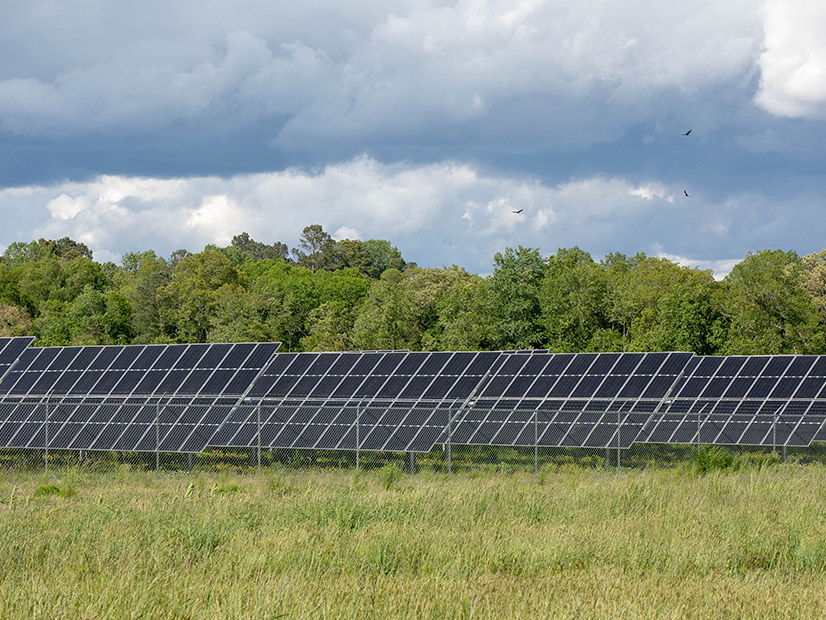ISO-NE should go beyond the changes required by Order 2023 to address the high costs and long delays associated with interconnection in the region, said a recent white paper commissioned by Advanced Energy United and written by the energy consulting firm Daymark Energy Advisors.
“The costs imposed by inefficiencies in the interconnection process are borne by ratepayers in the region and are one significant factor which threatens the New England states’ decarbonization goals,” Daymark wrote. Advanced Energy United represents clean energy and storage developers, owners, and operators in the region.
The report detailed specific recommendations for the RTO’s compliance filing, along with longer-term actions to take to address issues that will not be addressed in the filing.
“While it is critical that Order 2023 is addressed and that a solid compliance package is submitted to the commission, we stress that this marks the beginning of the region’s interconnection process reform efforts,” Daymark wrote. “Changing technology, policy efforts and expected FERC orders on planning and cost allocation, among others, makes continued attention to comprehensive market reform imperative.”
Regarding ISO-NE’s Order 2023 compliance, Daymark said ISO-NE should work to limit the potential for restudies and keep the cluster study window to the 150-day time frame prescribed by FERC, instead of the RTO’s proposed 270-day cluster window. (See ISO-NE Details Proposed Order 2023 Compliance.) The firm said that reducing interconnection timelines was one of the main goals of the commission’s order, and a longer cluster study window could push back subsequent clusters.
ISO-NE representatives have said it is difficult to guarantee it will be able meet the 150-day timeline, in part because of the undetermined number of projects it may need to consider in any given cluster.
Daymark also recommended that ISO-NE clarify its methodology for studying separate subgroupings of projects within a given cluster. The firm said the RTO should publish the data and assumptions used in each cluster study in conjunction with its results.
“The process the ISO intends to use in each cluster study should be known before the cluster request window opens so that interconnection customers can replicate the process, if they so choose, and make fully informed decisions,” Daymark wrote.
Regarding alternative transmission technologies (ATTs), Daymark said ISO-NE should include dynamic line ratings with the other ATTs to be considered in interconnection studies. Daymark also called on the RTO to provide transparency around how each alternative will be considered in the study process and detail the results of ATT evaluations in study reports.
Looking beyond Order 2023 compliance, Daymark called for more disclosure around expected regional interconnection costs for project developers prior to interconnection studies, saying this could reduce the number of projects that drop out mid-process.
“Hand-in-hand with providing the data is ensuring that each study cycle follows a well-documented study approach,” Daymark added. The firm also said ISO-NE and the region’s transmission owners should work to minimize uncertainty within interconnection cost estimates and advocated for an upper limit to the cost overruns that can be charged to developers.
Finally, Daymark said spreading costs among a cluster of projects is a good first step toward properly allocating costs associated with interconnection upgrades. At the same time, ISO-NE should consider further steps to share the costs of upgrades with all beneficiaries, Daymark wrote.
“The establishment of a cost-allocation structure that is simple to administer, clear to all participants and fair to interconnection customers, the TOs and ratepayers should be a reform priority,” Daymark wrote, adding that interconnection upgrades can benefit state policy goals, enable increased electrification, promote system resilience and increase market competition.
“We recommend that the ISO pursue a cost allocation rule that would recognize the headroom created by a set of network upgrades and charge the projects in the cluster only for the system capability they needed to interconnect,” the report recommended, saying this would be conducive in the long term to “more closely coordinated planning of the system to address the reliable delivery of power to load and the interconnection of projects without distorting incentives.”




